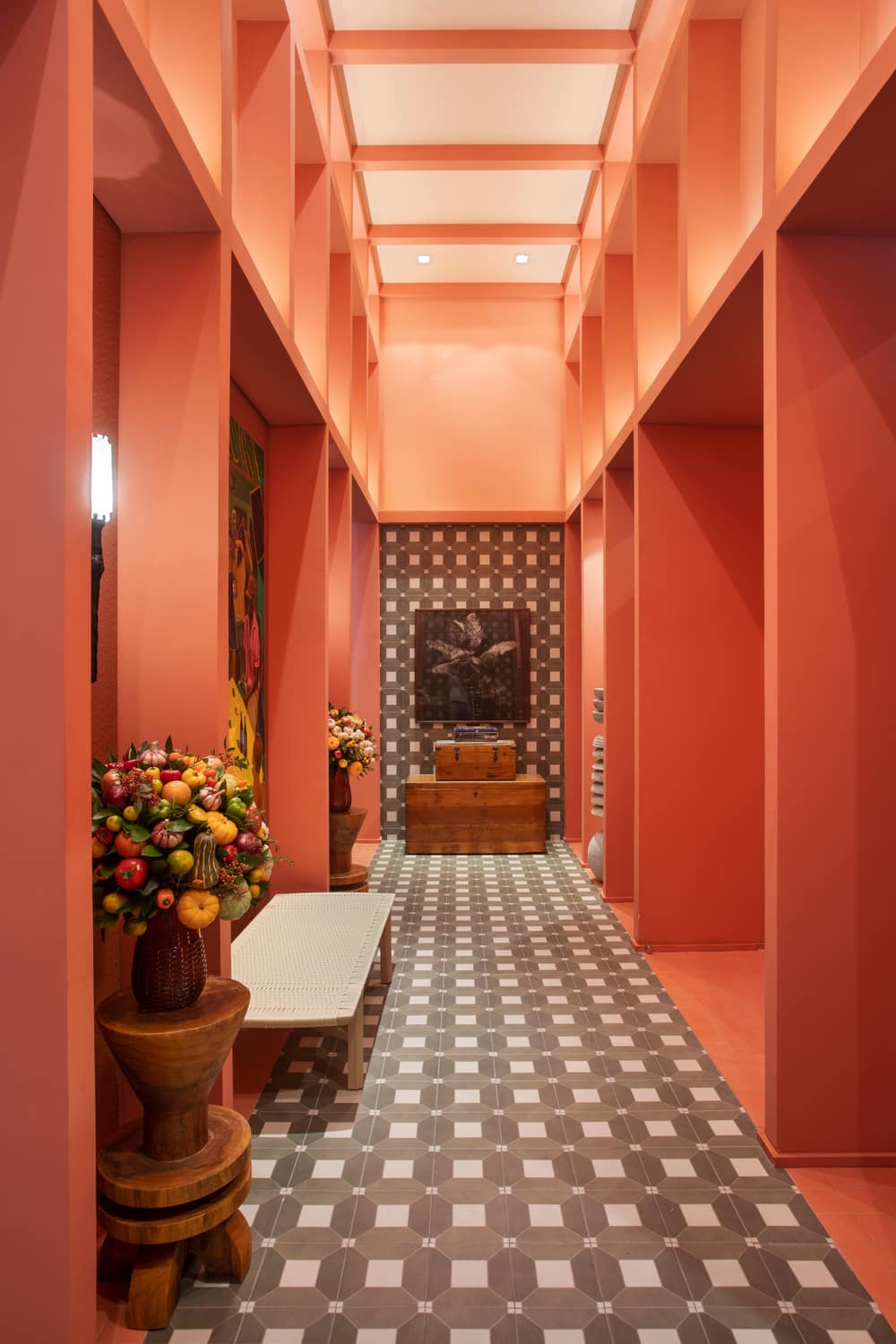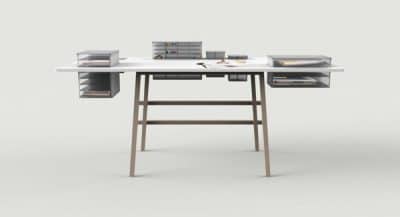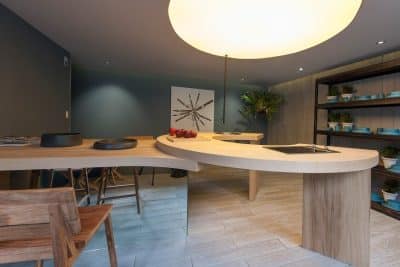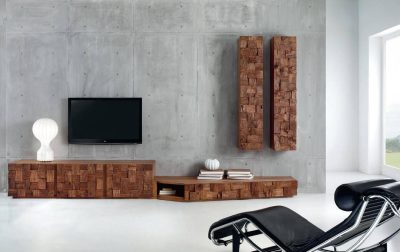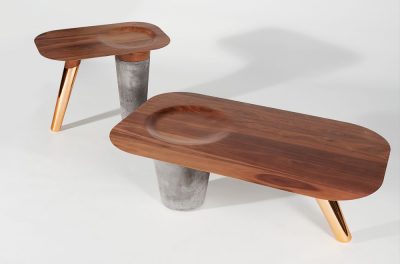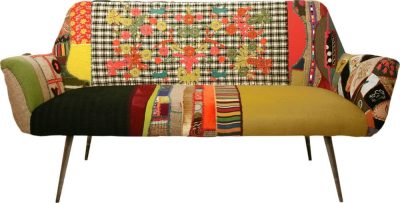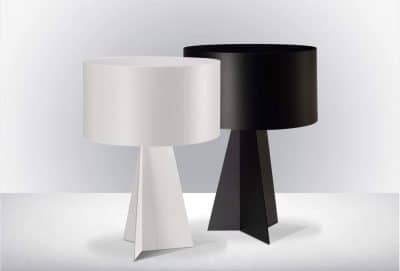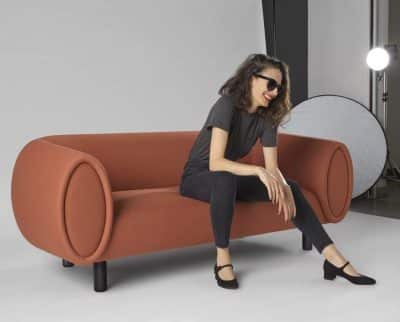
Casa Riachuelo and Marcelo Salum bring the spirit of the “Morada do Samba” to CASACOR SP
Architect pays tribute to African and Brazilian cultures in his project “Morada do Samba”
After successfully creating a captivating environment in homage to Atilio Baschera and Gregorio Kramer in 2022, Marcelo Salum embarks on a new challenge: celebrating African and Brazilian cultures, with samba as the foundation, alongside Casa Riachuelo as the main partner. Casa Riachuelo is a Brazilian brand that fosters connections and offers inspiring products for transforming homes into havens. Thus, the birth of the “Morada do Samba,” a space that marks the architect’s 9th participation in CASACOR and his fourth appearance in the São Paulo edition of the event.
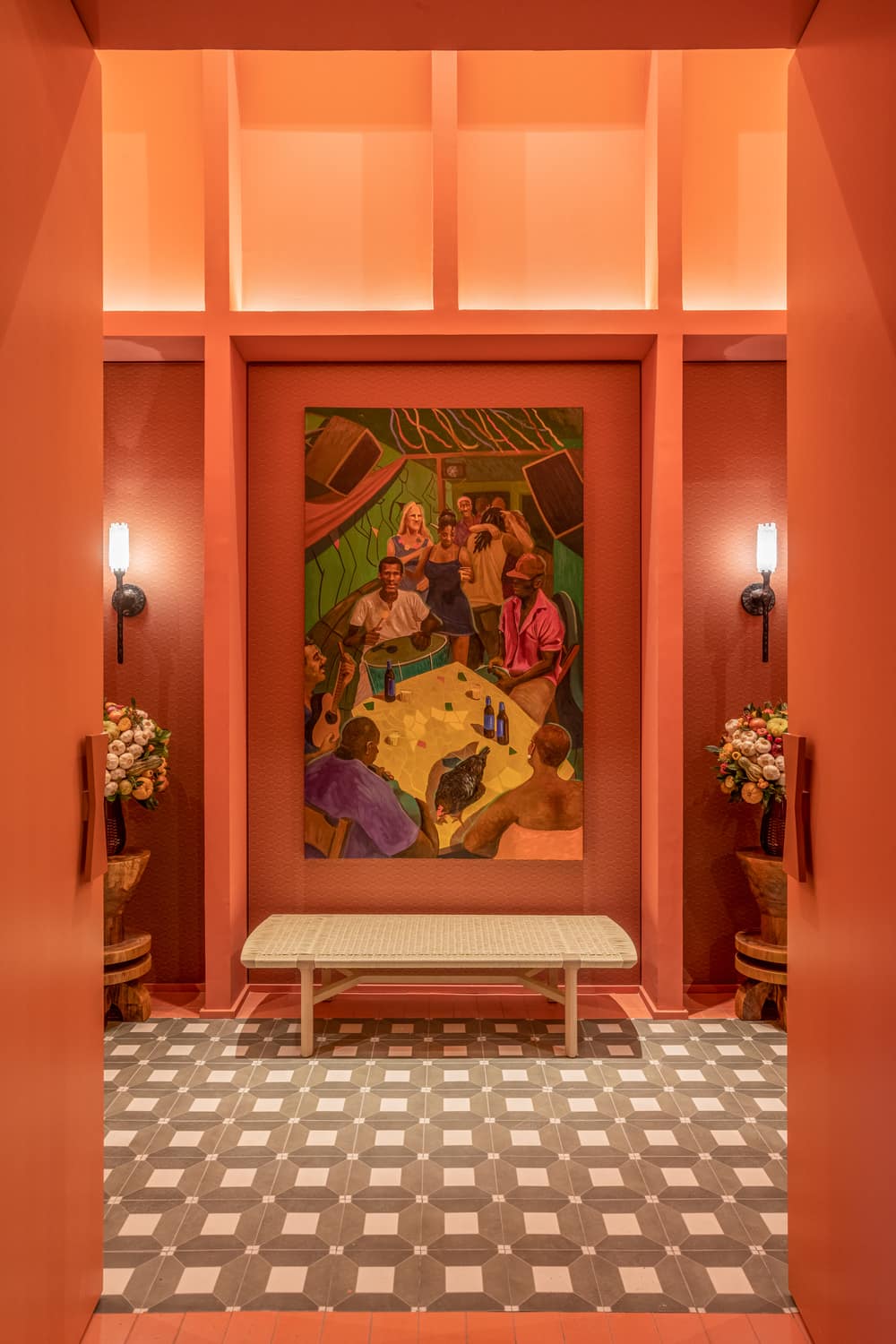
“As a 100% Brazilian company, there is no better way to honor one of the country’s primary symbols and intangible cultural heritages. We firmly believe in the transformative power of music, which sparks conversations not only through lyrics but also through the emotions and experiences it evokes. Salum’s design encapsulates the essence of Brazilian culture and the profound influence of samba’s roots, taking us on a historical journey akin to a melody,” explains Edgard Nicola Sanches, Commercial Director of Casa Riachuelo.

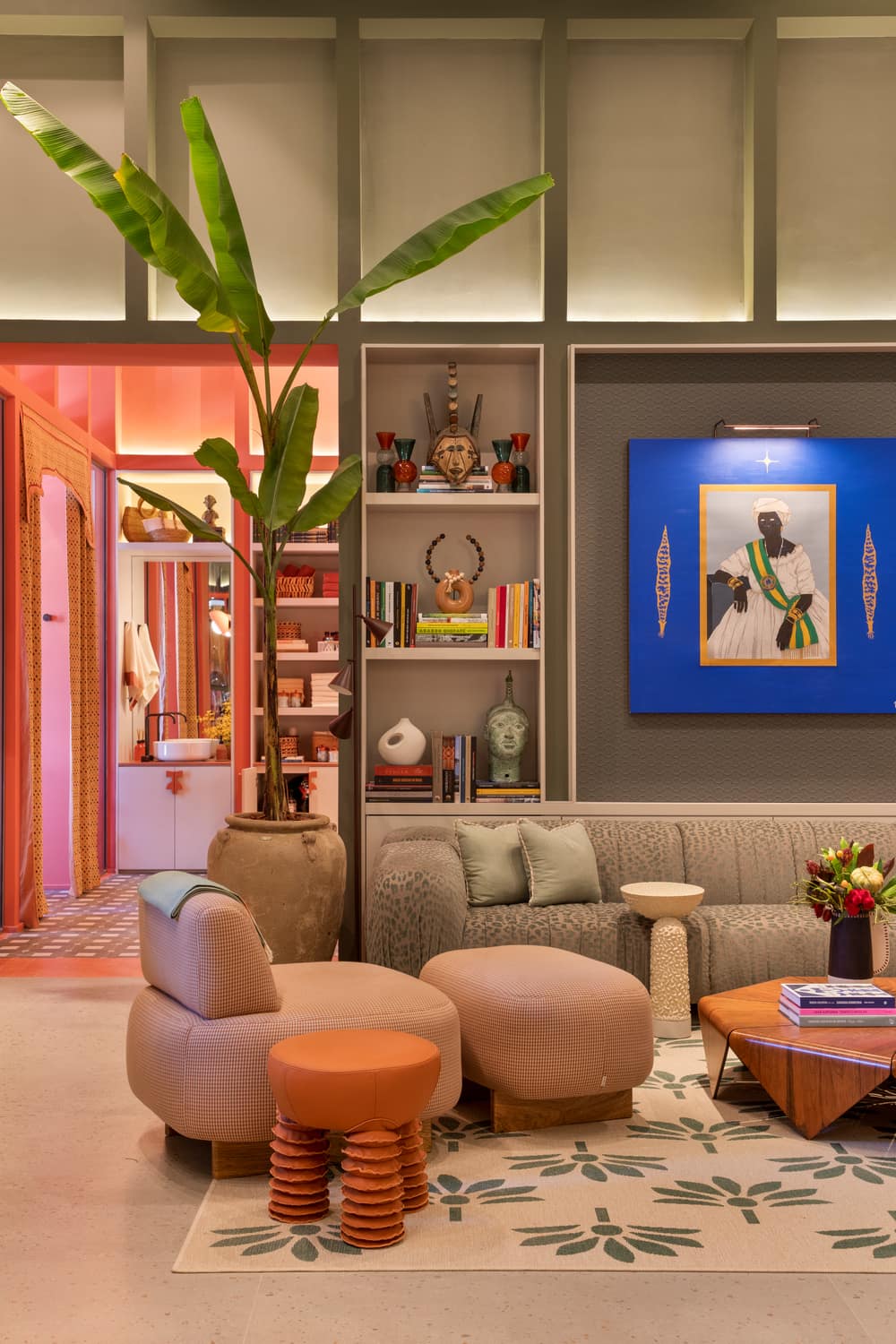
The inspiration behind the name of the space and its connection to the theme “Corpo e Morada” (Body and Dwelling) stems from the realization that our bodies serve as our dwellings, through which we express ourselves and our culture. Samba, one of Brazil’s most distinctive cultural movements, emerged as a means of liberation through music and dance, heavily influenced by African roots. It embodies strength, movement, joy, and an immersive, infectious rhythm that awakens the senses.

Salum has a profound affinity for music in general, with his childhood memories intricately linked to samba, especially during summer vacations. These memories encompass family moments and even watching Carnival parades on television. The architect was enchanted by the vibrant colors and magnificent costumes, stating, “It’s a rhythm that stirs something within me.” Thus, the concept behind his project for CASACOR São Paulo was to incorporate all these influences, the energy, joy, and rhythm that samba embodies.
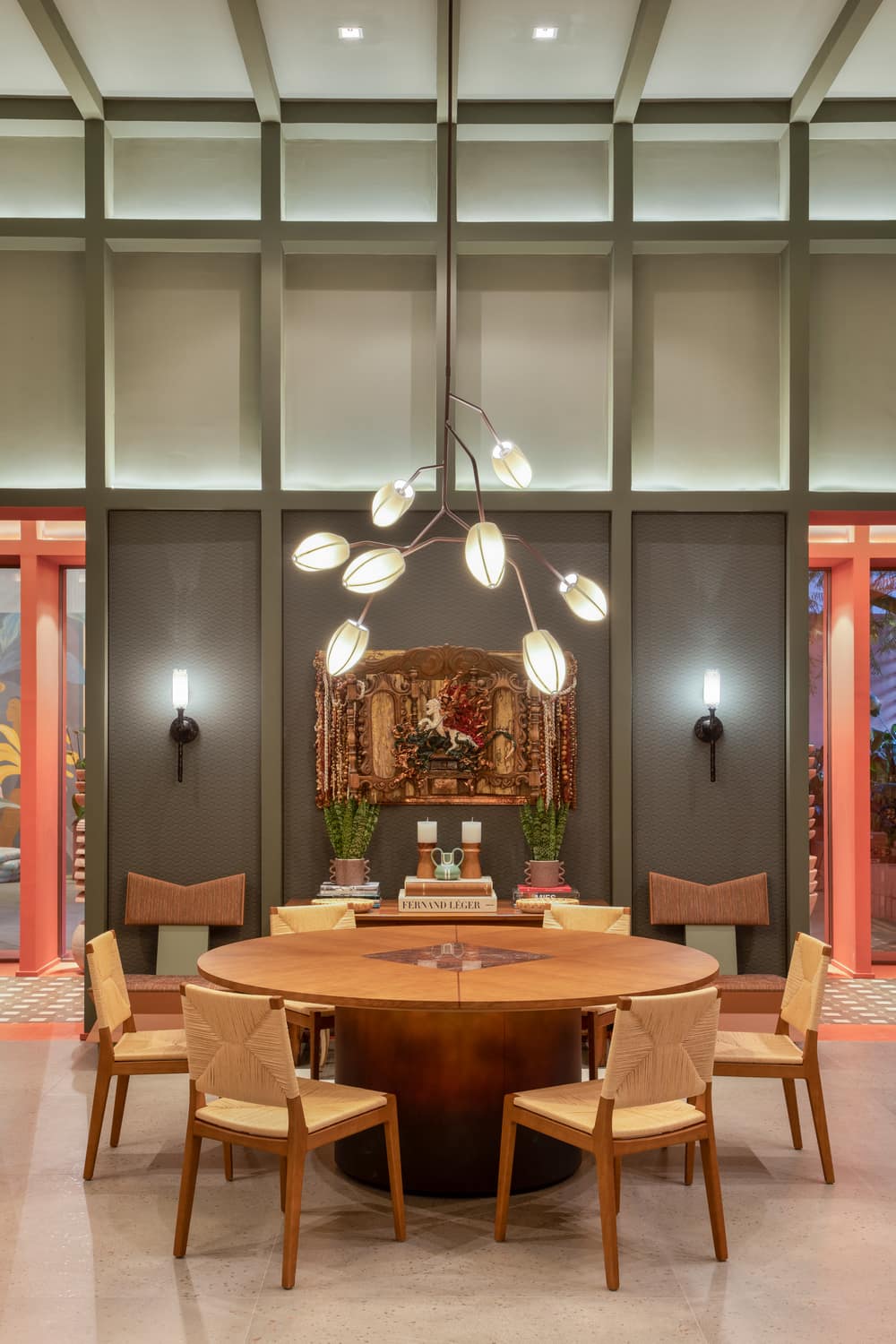
Salum consistently incorporates the Golden Ratio in his projects, and this one is no exception. The Golden Ratio is prominently featured right at the entrance of the space, guiding its distribution into three distinct areas. The first area comprises a welcoming hall, followed by a central space housing two seating areas: a dining area and a kitchen. Finally, there is a bedroom with an attached bathroom and an office, completing the layout.
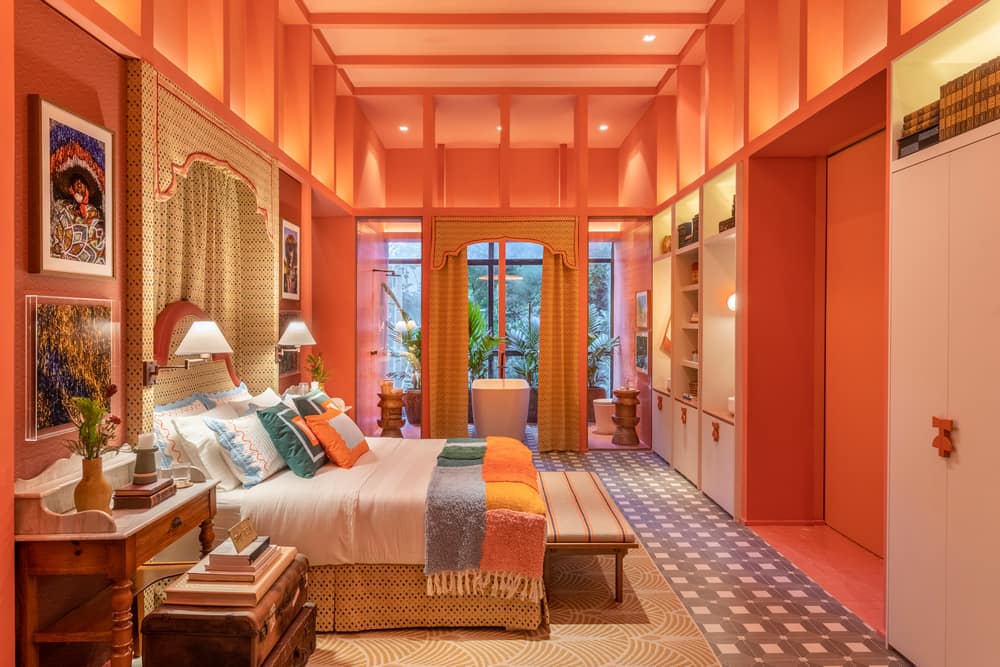
An inherent characteristic of Salum’s work is his ability to accentuate spaces through a harmonious blend of colors and meticulous attention to detail, effectively narrating the story of the environment. Casa Riachuelo adds an air of sophistication and timelessness through its collaboration with the brand Allmost Vintage. This collaboration is evident in the ceramic plates, bowls, and cups adorned in shades of green, blue, and orange, organically combined with the various glasses, baskets, and other pieces from Casa Riachuelo’s Fall-Winter collection.
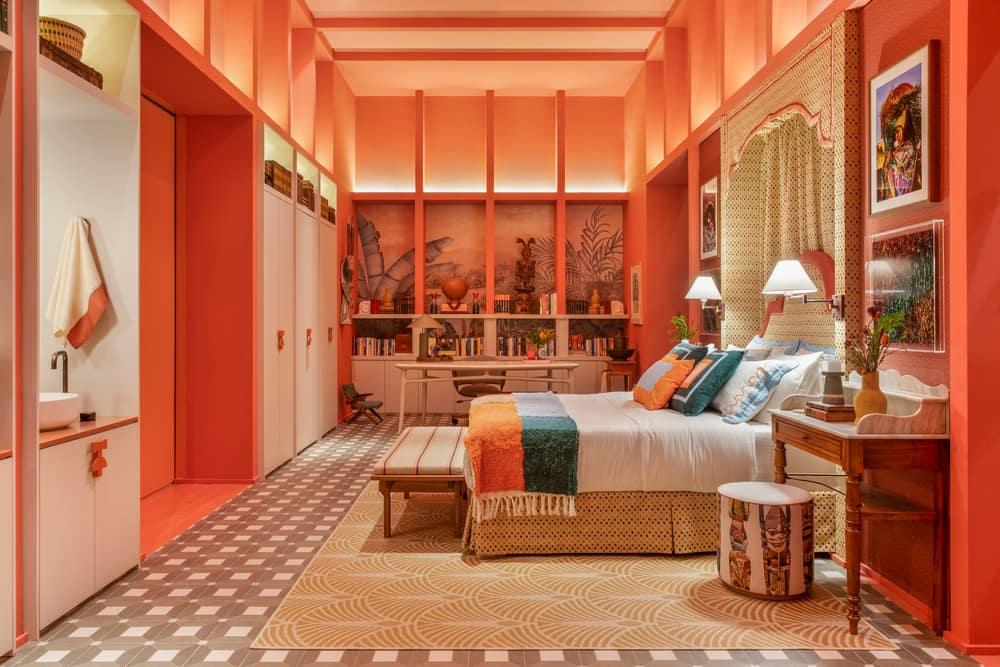
The Fall-Winter collection also appears in other areas of the space. In the bedroom, for example, the quilt, pillowcases, blankets used as foot throws, and cushions contribute to the overall mix of textures and colors.
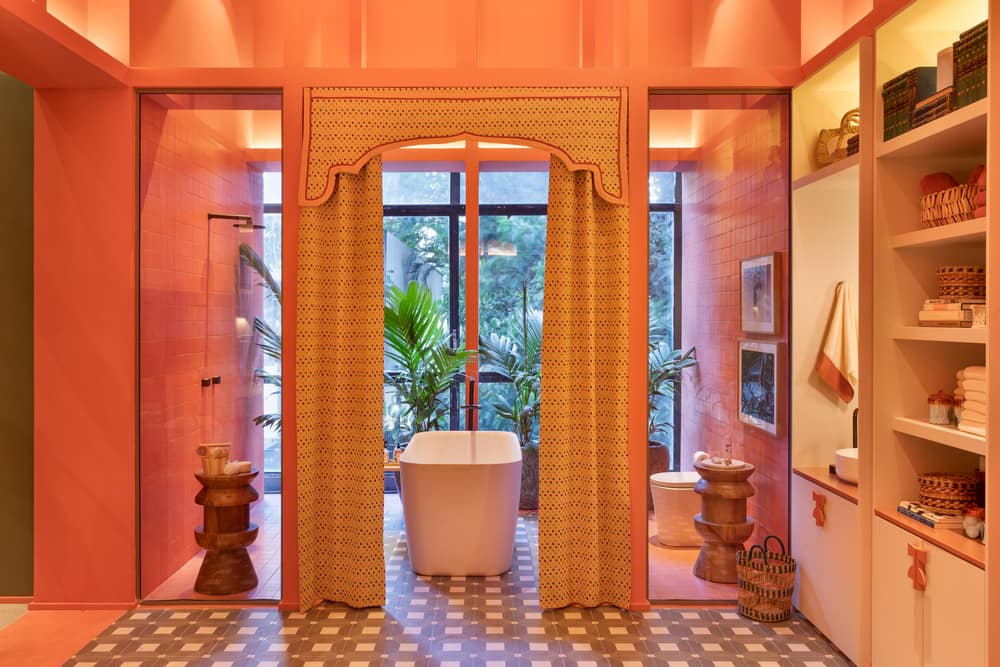
Every aspect of the space, from bedding and tableware to bath items, kitchen utensils, decorative objects, and rugs, reflects the carefully crafted concept and attention to detail. Casa Riachuelo, a significant partner in this project, provides all these elements. “Having a brand that, like me, values storytelling and adds personality through details, was crucial for the successful execution of this project, of which I am immensely proud,” expresses Marcelo Salum. Another noteworthy feature of the space is its olfactory identity, infused with cashew notes exclusively created and developed by Casa Riachuelo for this environment. This unique fragrance emits a cheerful and energetic aroma with hints of citrus and floral undertones, enhancing the overall sensory experience.
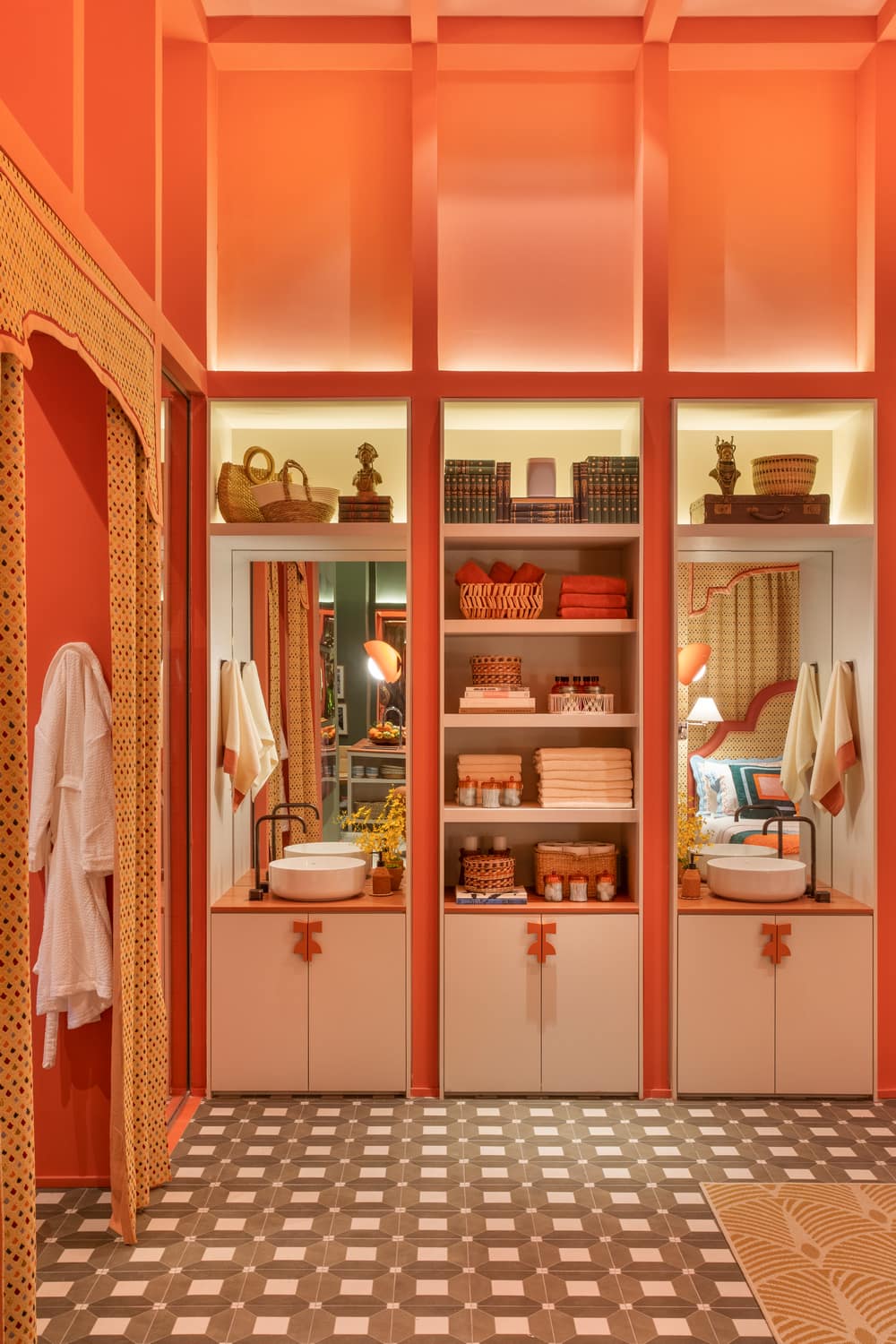
The selection of colors was influenced by the flooring choices, using three distinct models produced by Ceusa. The first is the Easy line, which incorporates three shades of coral and three shades of green. The second is the Retro line, featuring decorative tiles reminiscent of old farms. Lastly, the Flakes line evokes the vibrant and festive atmosphere of carnival confetti. These chosen colors seamlessly extend to the walls, painted with a gradient effect. Two different palettes were employed: coral and green, which also find expression in the cladding of some of the walls through panels framing artworks. The panels were executed by Duratex based on designs from Marcelo Salum’s team inspired by the Ashanti culture, specifically by the geometric forms of the Adinkra symbols.
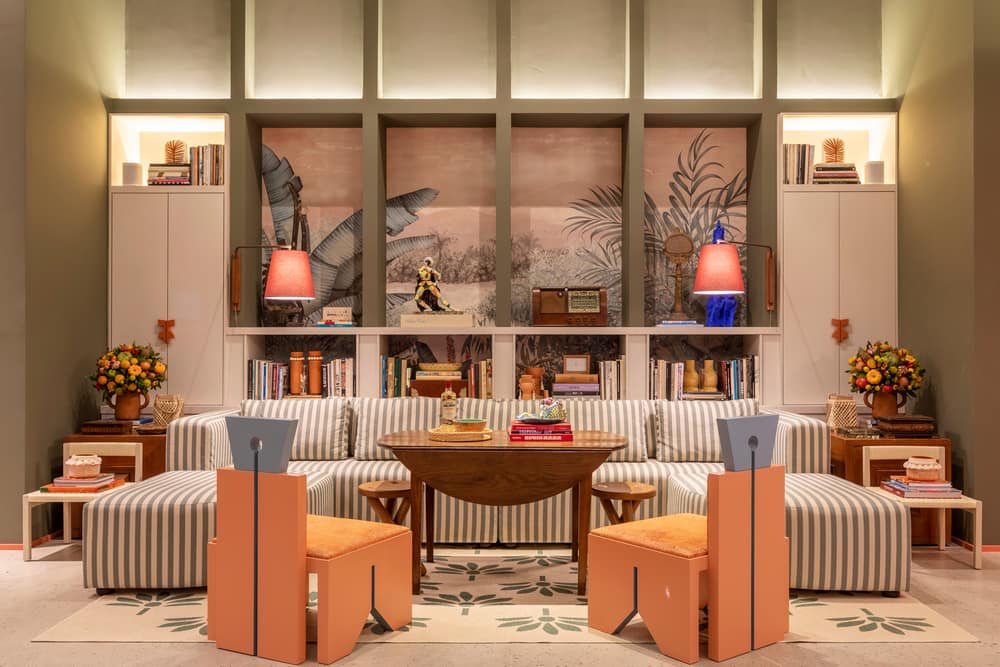
The careful curation of artworks plays a pivotal role in the project, contributing to its overall ambiance. To complement the environment, a selection of masks, which hold significant cultural value in African traditions, were sourced from the museological collection of Pangea. Additionally, the work of Emerson Rocha deserves special mention. Rocha draws inspiration from a photograph captured by Alberto Henschel in 1839 in Bahia, Brazil. Rocha “relocates” the depicted figure, taking into account the historical context of the republic in the country, which has predominantly been governed by white Christian men since its proclamation.
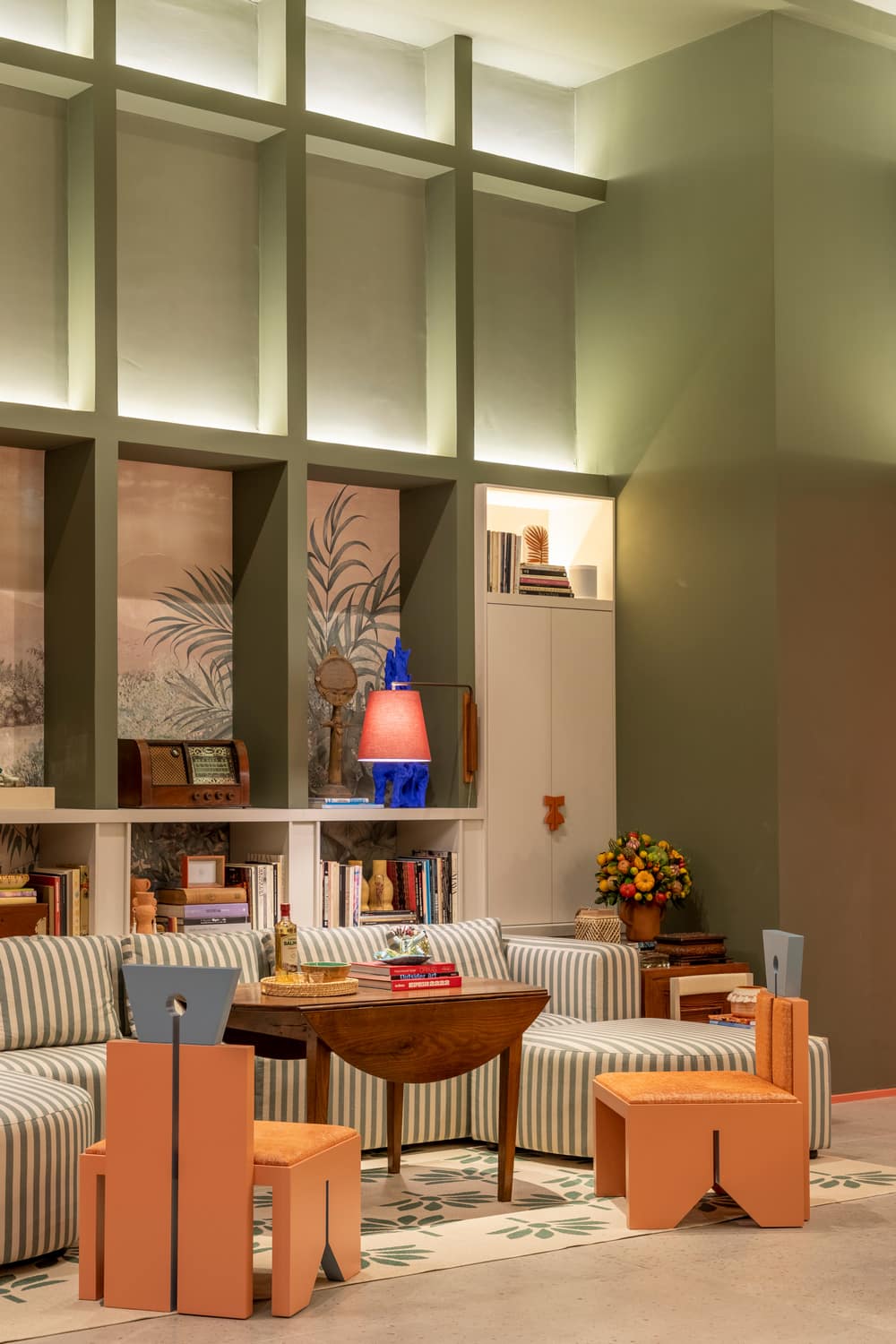
The entrance of the project showcases various remarkable artworks. Among them are a painting and two sculptures by Daniel Jorge, an exclusive painting capturing a “samba circle” by Luiz Pasqualini, and a Saint George oratory crafted by Juliano Aguiar. The space also includes photographs by Juliana Hofmann, Bruno Jungmann, Mario Cravo Neto, and Carlos Vergara, as well as a painting by Maurício Adinolfi (the latter three represented by the Bolsa de Arte gallery), among other notable artists.
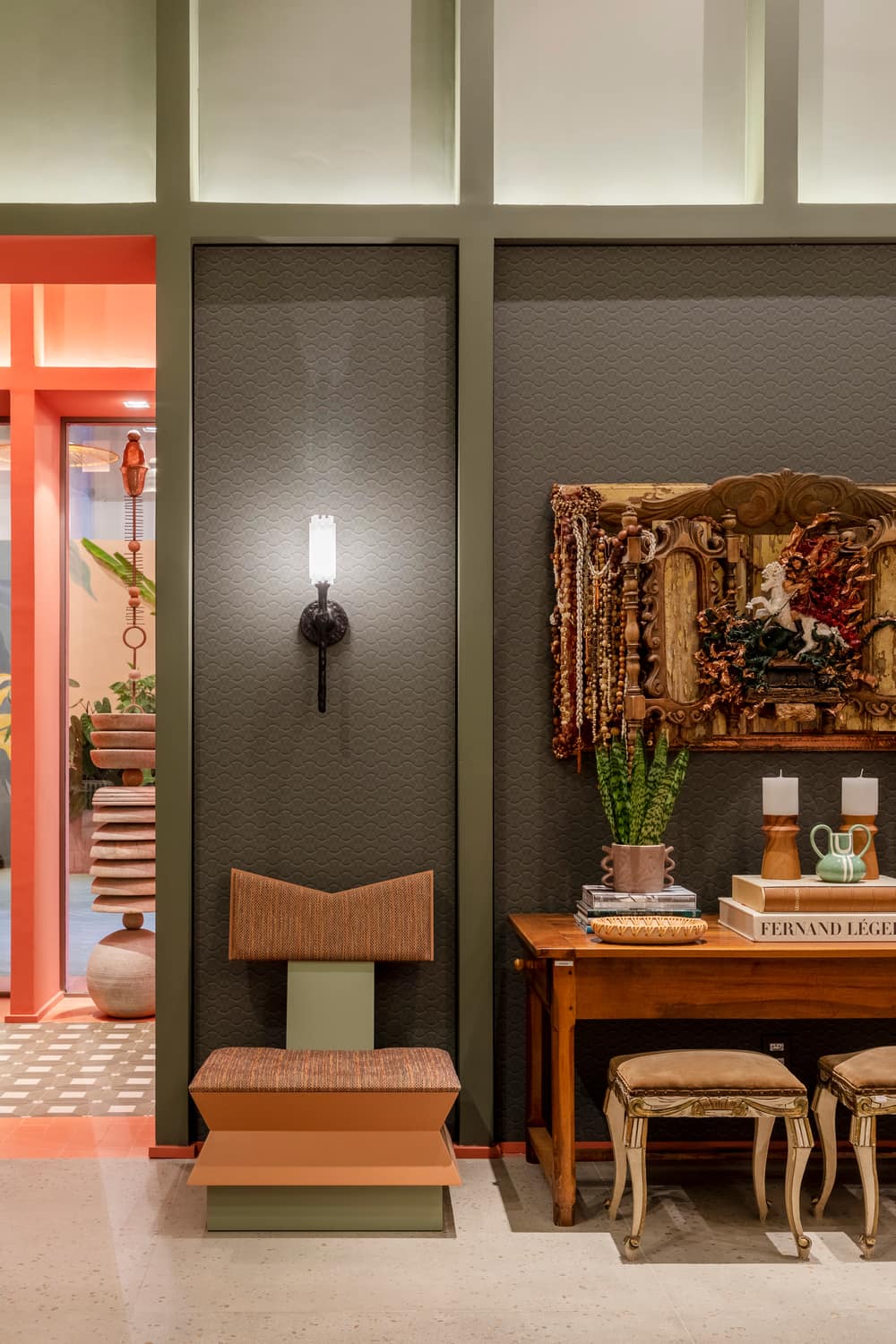
The furniture selection comprises a blend of creations from Marcelo Salum’s team and the Fresa Studio, a collaboration between Salum and Frederico Cruz. These designs draw inspiration from the artistic work of Rubem Valentim, incorporating influences from African culture and its religious symbols. As a result, the space features two armchairs and two stools that reflect these inspirations. In addition to the original designs, there are also new pieces designed by Roberta Banqueri. These contemporary creations coexist harmoniously with antique furniture sourced from Arnaldo Danemberg and the Teo Gallery. Furthermore, the space showcases furniture by Jader Almeida from Sollos and Studio Ambientes.
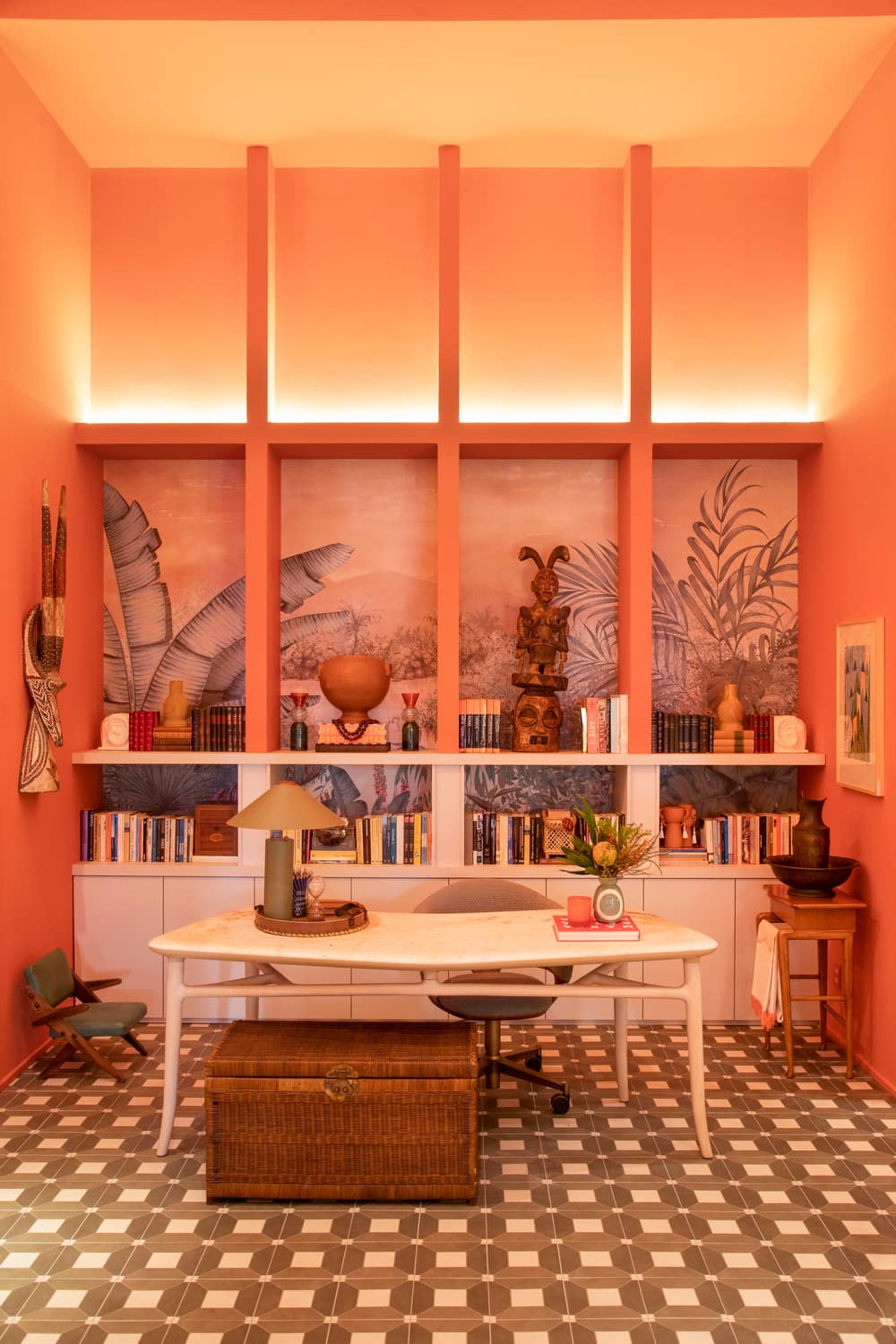
Marcelo Salum’s team demonstrated meticulous attention to detail by designing every aspect, including the handles for all doors throughout the space, from the bedroom to the kitchen. Sustainability was also a priority, evident in the use of LED lights. The creations of Cristiana Bertolucci add a distinctive touch to the lighting project, which was executed by Ouse Iluminação.
“It is a unique opportunity to pay tribute to African culture, which has played a significant role in shaping the Brazilian identity through its vibrant colors, textures, rhythms, religious beliefs, and symbolism,” concludes the architect.
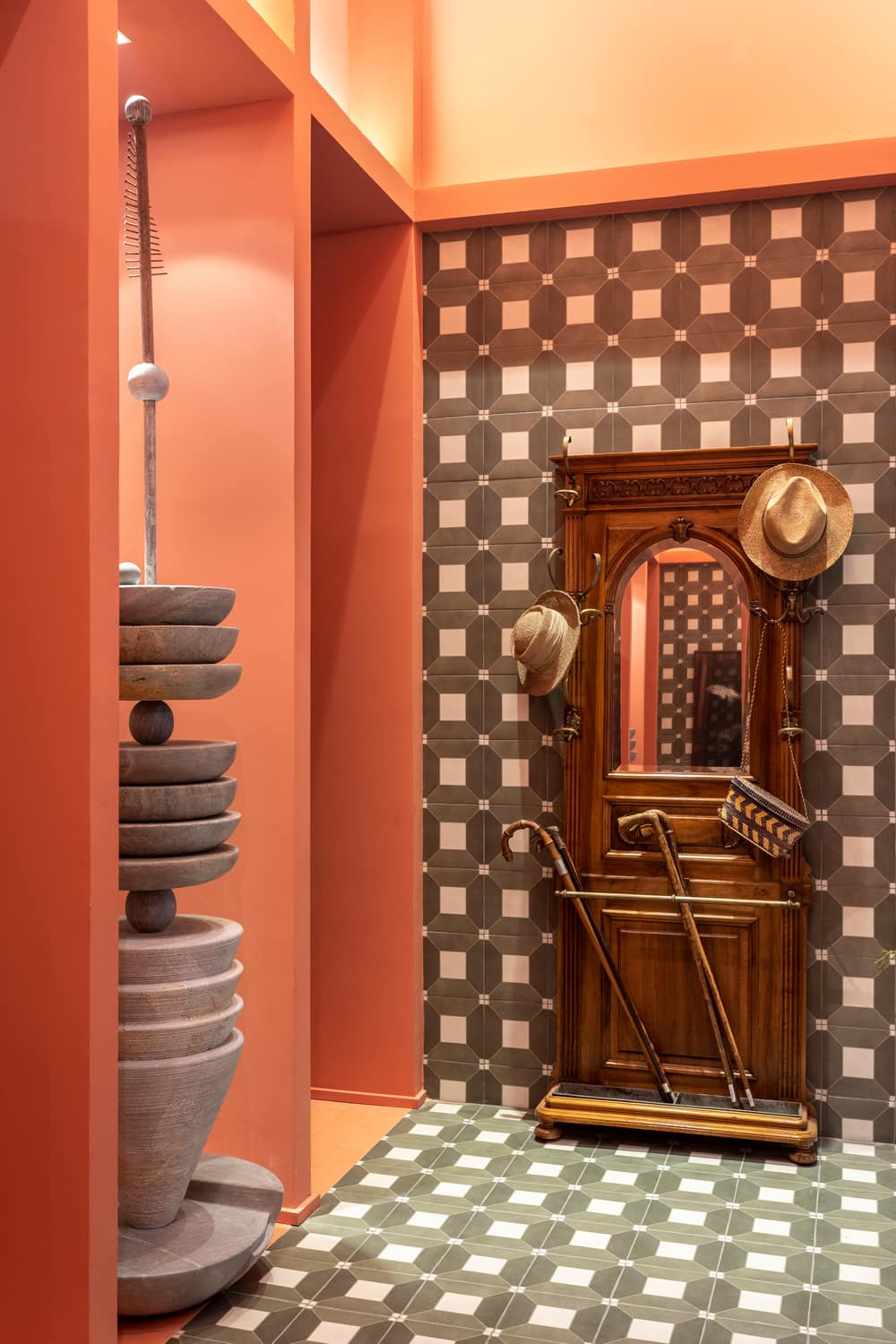
Marcelo Salum, a graduate of the University of Vale do Itajaí (Univali), made his first appearance in CASACOR in 2002, participating in the Florianópolis edition. Since then, he has been actively involved in the event, participating numerous times, including the renowned São Paulo edition. His portfolio extends beyond Brazil, encompassing projects in other countries, including the United States. Salum’s unique style has garnered attention from clients who appreciate his approach, characterized by a diverse array of objects. By skillfully combining elements, colors, and textures, he achieves a harmonious and personalized outcome in his designs. Color is a prominent feature in his work, and rather than overwhelming the senses, the abundance of colors follows a distinct dynamic in each project, resonating in each story and each life.
